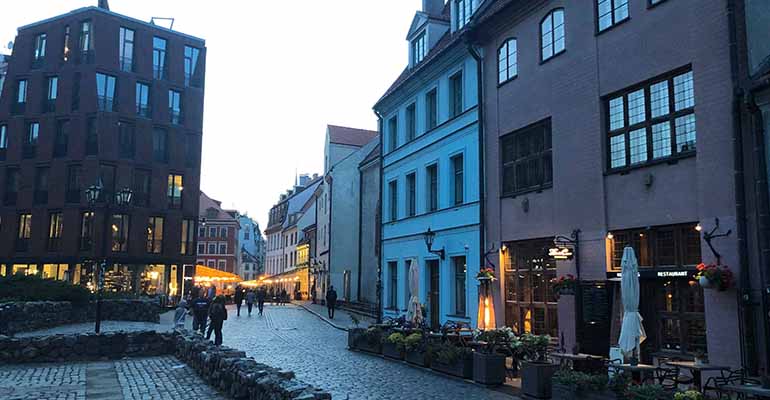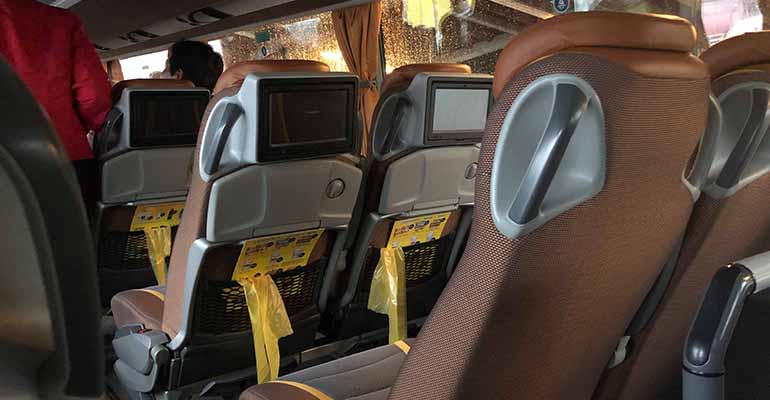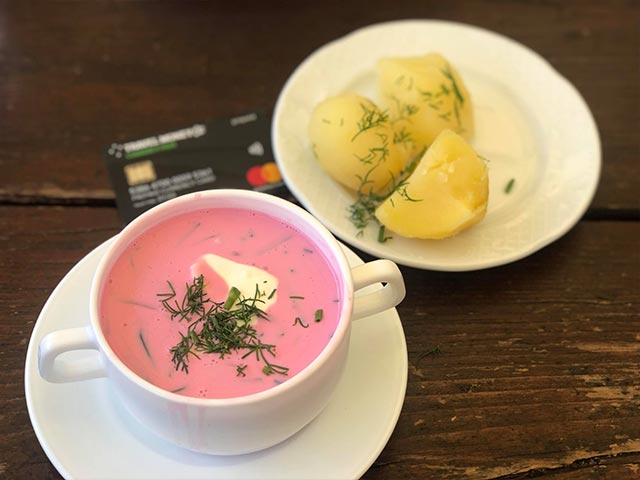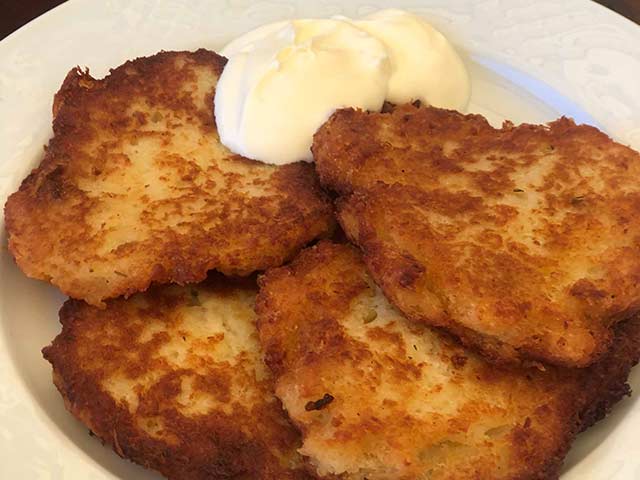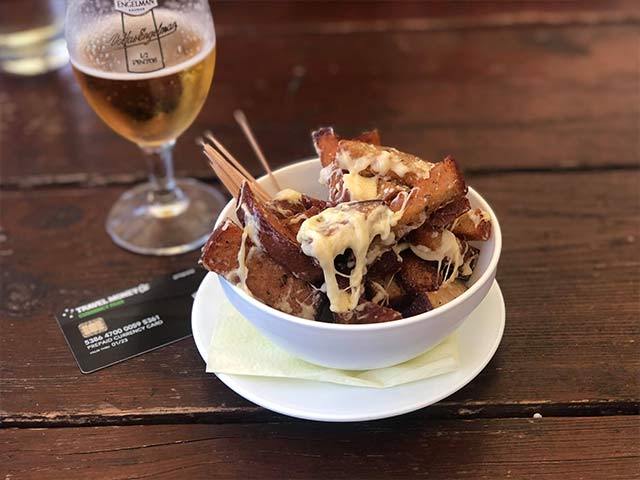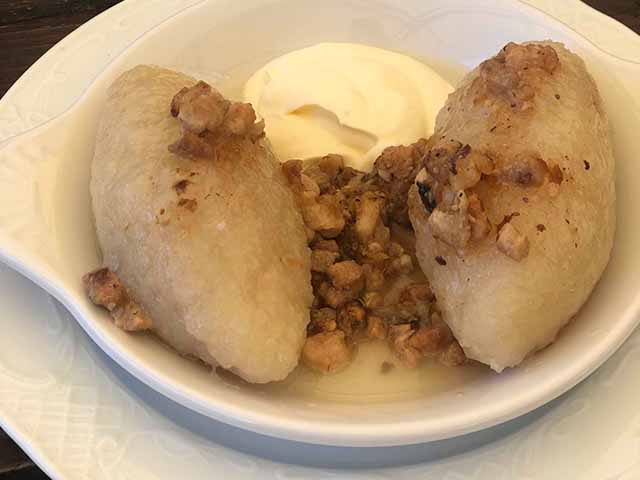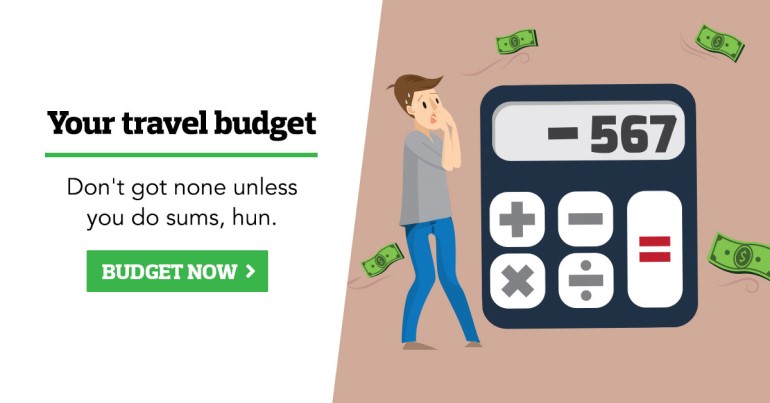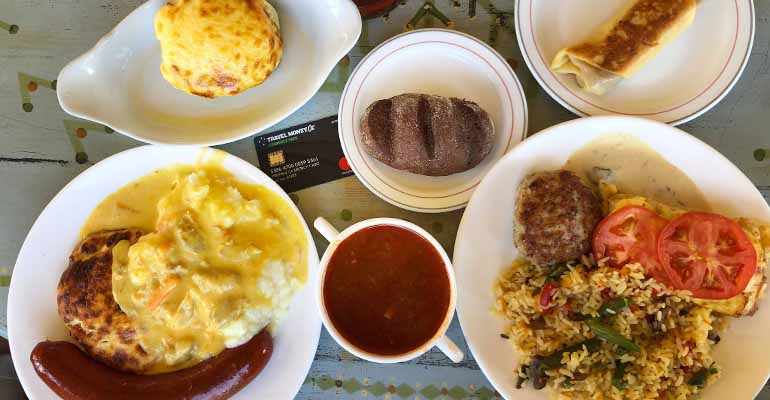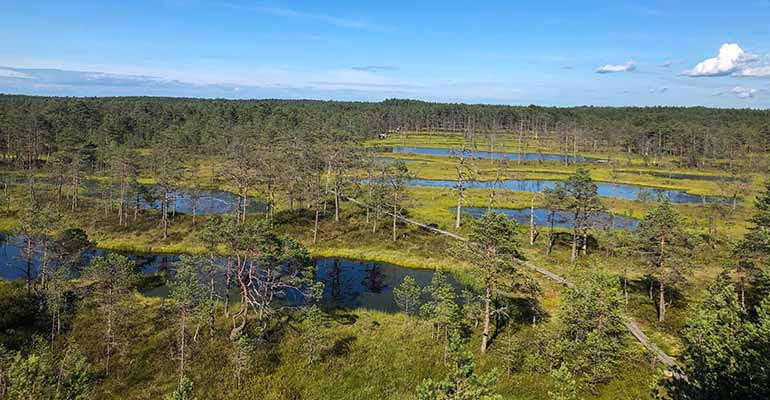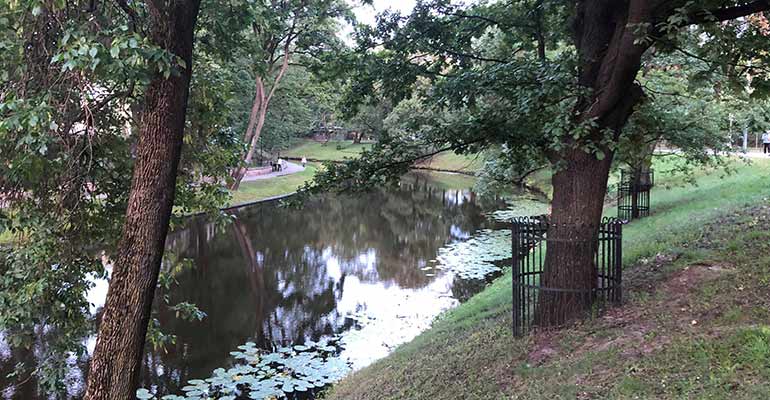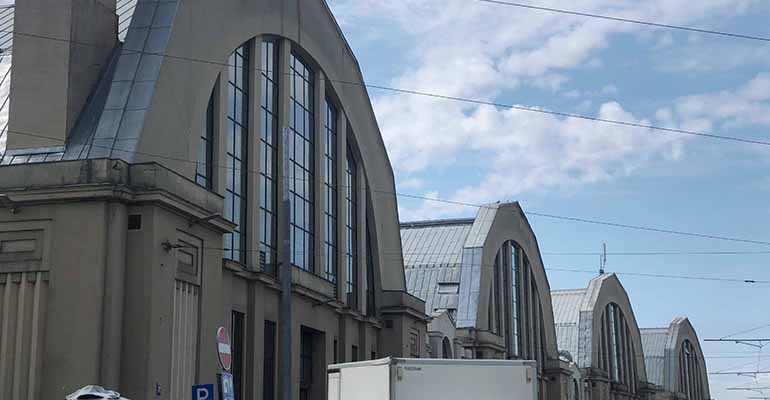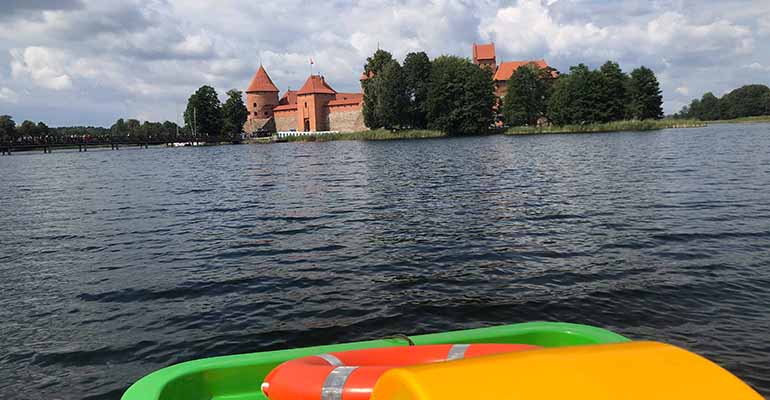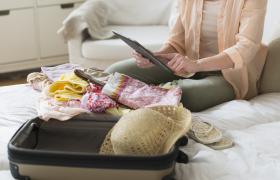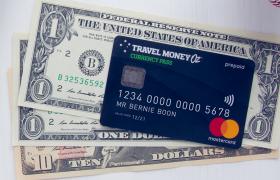If you need some groceries or even cheaper meals, head to Rimi. Rimi is a grocery chain found in all Baltic countries that sells all of your essential groceries. It also has super cheap alcohol (and a few weird and wonderful Baltic delicacies). Just keep in mind that in the majority of supermarkets, alcohol will only be sold between 10 am and 10 pm and drinking on the street is a big no-no.
If you are after a traditional meal, I'd recommend heading to Lido. They are found in Tallinn and Riga and have a vast offering of local dishes of high quality. They are kinda like Ikea, where you go past the buffet choosing the meals you want before paying for everything at the counter. When I went, my eyes were bigger than my stomach, but I was able to get a feast for less than 20euros. In Lithuania, there are plenty of restaurants serving authentic food (recommendations listed below).
This was only half of what I got at Lido. Not pictured is at least 4 different potato dishes.
Estonia
Bordering Russia, Latvia and the Baltic Sea, Estonia is a unique city that has maintained the authenticity of the past while still moving into the future. Its capital, Tallinn, is the hotspot with most travellers with the remaining countryside being relatively untouched by tourists.
During the summer months, you will have daylight from 4 am until 10 pm, allowing plenty of time to explore.
Transport: Trips on public transport within the city of Tallinn cost 1 euro, with a maximum daily charge of 3 euros. You can catch buses and trains further afar for slightly more. I just used my Currency Pass to tap on; however you can buy tickets from the driver or purchase a travel card at any R-Kiosk.
Must do in Tallinn
- Explore Old Town with a free walking tour. They operate most days in the summer at regular intervals - check a schedule on Google or grab an open map from the bus station or airport that details the English tours. The tour details the intricate medieval and recent history of the Old Town. I recommend having a few euros on hand to tip your guide at the end.
- Visit a Bog. Yes, a bog. Put your misconceptions aside and head out to one of Estonia's many stunning bogs. I was pretty dubious and said 'get outta my swamp' one too many times, but it was genuinely a lovely day out of the city. The Viru Bog is the most accessible from Tallinn city, just over an hour bus ride away. You can do guided tours, but a bus is just as comfortable, and you can marvel at the bog in your own time. There are heaps of walking trails, viewing platforms and even a few swimming spots. As my Estonian friend told me, pack your togs if you're heading to the bogs!
What a beautiful bog.
- Day trip to Finland. If you have a few days in Estonia, you can very quickly take a day trip to Helsinki. The boat trip is just over two hours each way and tickets start at 25 euros return, depending on the time and company. Book online to secure your seat and get a better price.
- Enjoy the festivities. During the summer months, the Old Town main square will host a plethora of markets, events, festivals and performances. A perfect change to appreciate and gain a better understanding of the local culture.
- Eat delicious food. Let's be real; this one kinda goes without saying. You can find a multitude of cuisines in Tallinn to quench any craving. If you're after a unique medieval experience, visit III Drakon in the main square. Meals range between 1.5 and 3.5 euros (unless you're after ribs which are 15 euros), are served in clay pots and eaten with your hands. The soup is to die for, and it is fun fishing for pickles from a barrel. If you're after a hipster cafe popular with the locals, then hit up Must Puude (Black Poodle) which serves a mixture of traditional and modern cuisine. Finally, if you love cheap pancakes (I would question your motivation if you don't) then head to Kompressor.
Latvia
If you follow the coastline along from Estonia, your next stop will be Latvia's capital, Riga. Riga's Old Town is hugged by the city canal and parkland that could give the Netherlands a run for its money.
Not pictured: the bugs that attacked me as I strolled along the canal.
Transport: Riga is a very walkable city, so you shouldn't need to catch public transportation while there. If you are looking to go further afar, I would recommend looking at buses, trains or taxis. If you are going within a 30min distance with a group of people, taxis may be the most cost-effective option as you split the fare.
Must do in Riga
-
Alternative walking tour. Like Estonia you can do an Old Town walking tour, but I recommend doing the Alternative Riga Free tour instead. Here you will be lead through the outer suburbs of the city and given a more authentic glimpse into Latvian life. As the name suggests the tour is free, however, the guides do a pretty good job, so a few euros tip is the norm.
-
Visit the Central Market. This used to be one of the biggest markets in the world hosted in old Zeppelin hangers. Fun fact: the hangers were all relocated from a different part of Latvia. You'll learn that in the Alternative walking tour. Here you will find plenty of Latvian staples - pickled vegetables, smoked seafood and pork - as well as plenty of fresh produce for excellent prices. Keep your eyes peeled for pickpockets though, as their nimble fingers are known to get a workout at these markets.
- All of these domes were relocated from across the country.
-
Riga Ghetto Museum. Learn about the tragic history of Latvia's Jewish community and the hardships they faced from both the Nazi's and the Soviets. A sobering but necessary experience to gain a better understanding of Latvia's development as a country. Admission is free, but it is closed on Saturday's.
-
Take a canal boat ride. Sick of walking? Hop on a boat and see the city from the unique perspective of the canals. A one hour trip costs 18 euros. Make sure you pack some earphones so you can listen to the audio guide.
-
Eat delicious food. Hit up the Lido mentioned above for a potato and sour cream-filled Latvian food extravaganza. If you're craving the comforts of home, Street Burger has some deliciously cheap burgers, milkshakes and super cheap beers. Head to 'Andrejosta', an underground bar near Riga port for some nice drinks as well.
Lithuania
The final Baltic country is Lithuania. Like the other countries, it's capital Vilnius is the go-to area for tourists. Vilnius is far more inland than the other cities though, so it is slightly less touristy. With this in mind, it boasts one of the biggest Old Towns and plenty of hot spots making it more than worthy of inclusion on your itinerary.
Transport: while you can still walk most places, Vilnius is quite large so buses are your best bet for long distances. Better yet, it's super cheap with most trips being 2 euros or less.
Must do in Vilnius
- Day trip to Trakai. An hour bus ride will take you to Trakai known for its 14th Century Castle Fortress in the middle of a lake and Karaim culture and history. Here you can explore by foot or hire a paddleboat for 5 euros per hour. It's also worth stopping in at a restaurant to try a traditional Kybun (meat in a pastie), as well as a plethora of traditional potato dishes.
Paddle boat view of the castle.
- Explore the Old Town and see the street art. Another day, another Old Town. The size of Vilnius' Old Town makes a free walking tour very worthwhile. If you're all Old Town-ed out though, you can also trek through the city in search of some seriously Instagrammable street art.
- People watching at the Parks. Vilnius has some beautiful parks scattered all throughout the city. On a nice summer day, you can easily park up, enjoy the weather and dabble in some people watching. If you go between four and seven in the afternoon, you are also likely to see a lot of cute dogs on their afternoon walk. The perfect way to catch your breath after a day of exploring
- Check out the Churches. Vilnius has 28 churches that, during the Soviet rule, were transformed into warehouses, sports halls and museums on the inside instead of being destroyed. These are a true bruise from the Soviet reign and while some churches haven't been restored on the inside, their outsides are still intact and very beautiful.
- Eat delicious food. Are you sensing a common thread here? Vilnius has an epic cafe culture, as well as a love affair with pizza. Everywhere you look, you'll either find a cute cafe or shop selling drool-worthy Italian food. Top pics are Casa La Familia (try the Mexican pizza), Vegcafe for vegan and vegetarian delights and Monstro Pizza Bar for authentic pizza, cheap drinks and good vibes.
The Baltics are by far one of the most up and coming places to travel in Europe. This is no surprise considering their beautiful scenery, delicious food and unique snapshot of WW2 and soviet reign.
If you're keen on more Baltic travel tips or are ready to purchase your euros and Currency Pass, be sure to visit one of the 150+ Travel Money Oz stores across Australia and New Zealand.

This blog is provided for information only and does not take into consideration your objectives, financial situation or needs. You should consider whether the information and suggestions contained in any blog entry are appropriate for you, having regard to your own objectives, financial situation and needs. While we take reasonable care in providing the blog, we give no warranties or representations that it is complete or accurate, or is appropriate for you. We are not liable for any loss caused, whether due to negligence or otherwise, arising from the use of, or reliance on, the information and/or suggestions contained in this blog. All rates are quoted from the Travel Money Oz website and are valid as of 26 July 2019.*Terms and conditions apply to Rate Guard. *Be in to WIN with the Travel Money Club. For full terms and conditions click here.

